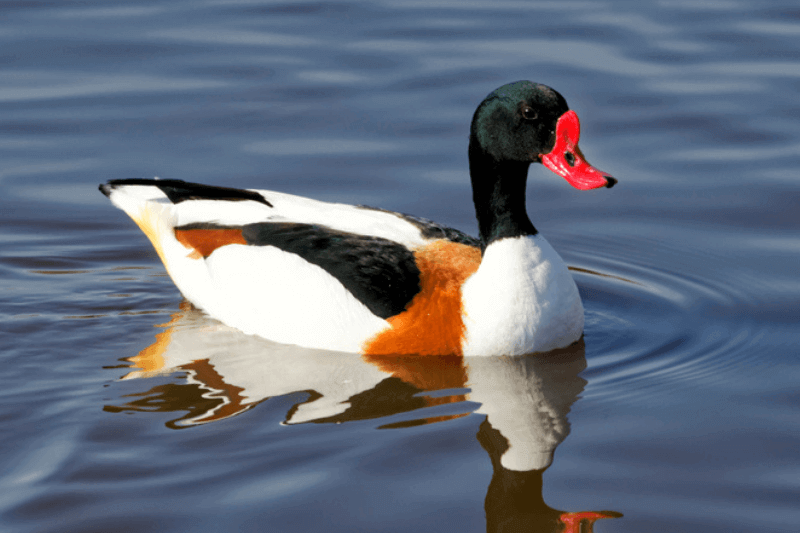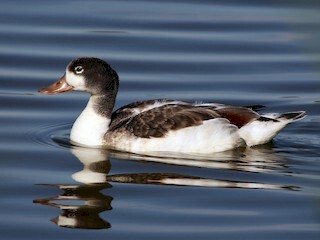Common Shelduck


Scientific name
Tadorna tadorna
Alternative names
None widely used
Subspecies
Monotypic – no subspecies recognized
Measurements
| Feature | Range / Note |
|---|---|
| Length | ~58–70 cm |
| Wingspan | ~110–133 cm |
| Weight | 0.9–1.6 kg |
| Male vs Female | Males slightly larger, brighter in breeding plumage |
Status
Widespread and common in the Euro-Siberian region. Protected under the Agreement on the Conservation of African-Eurasian Migratory Waterbirds (AEWA).
Identification
Resembles a small short-necked goose. Striking coloration: white body with chestnut patches, black belly, dark green head and neck, white wing coverts, black primary feathers, green and chestnut secondaries (visible in flight), almost entirely white underwings. Males have bright red bills with a prominent knob in breeding season; females are smaller with some white facial markings. Ducklings are white with black cap and patches; juveniles are greyish above, mostly white below, but show adult wing pattern.
Behavior
Wary, young dive under water to avoid predators while adults may act as decoys. Forms moulting flocks that can be very large, with crèches of partially grown young.
Feeding
Feeds in shallow waters, estuaries, tidal mudflats, lakes, and rivers. Often grazes and filters food in mud or shallow water.
Distribution
Breeds in temperate Euro-Siberia. Resident populations exist in westernmost Europe. Rare vagrants to North America, the Caribbean, and South America.
Habitat
Prefers open country near lakes, rivers, estuaries, and tidal mudflats. Nests in rabbit burrows, tree holes, haystacks, or similar sheltered locations.
Wintering
Migratory populations move to subtropical areas, including the Maghreb, for the winter. Resident populations in western Europe remain largely in place, often gathering in estuaries and tidal mudflats during colder months.
Breeding
Nests in sheltered cavities such as rabbit burrows or tree holes. Pairs often leave young in crèches with only one or two adults. Ducklings are raised communally in moulting flocks.
Vocalization
Loud honk, typical of shelducks.
Conservation
Not threatened; large moulting flocks reported, e.g., 100,000 at the Wadden Sea. AEWA protects the species across its migratory range.
